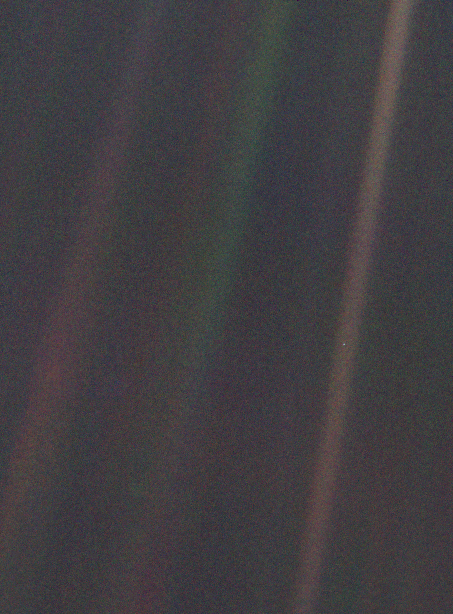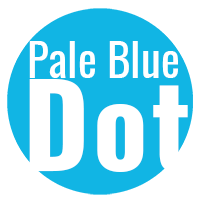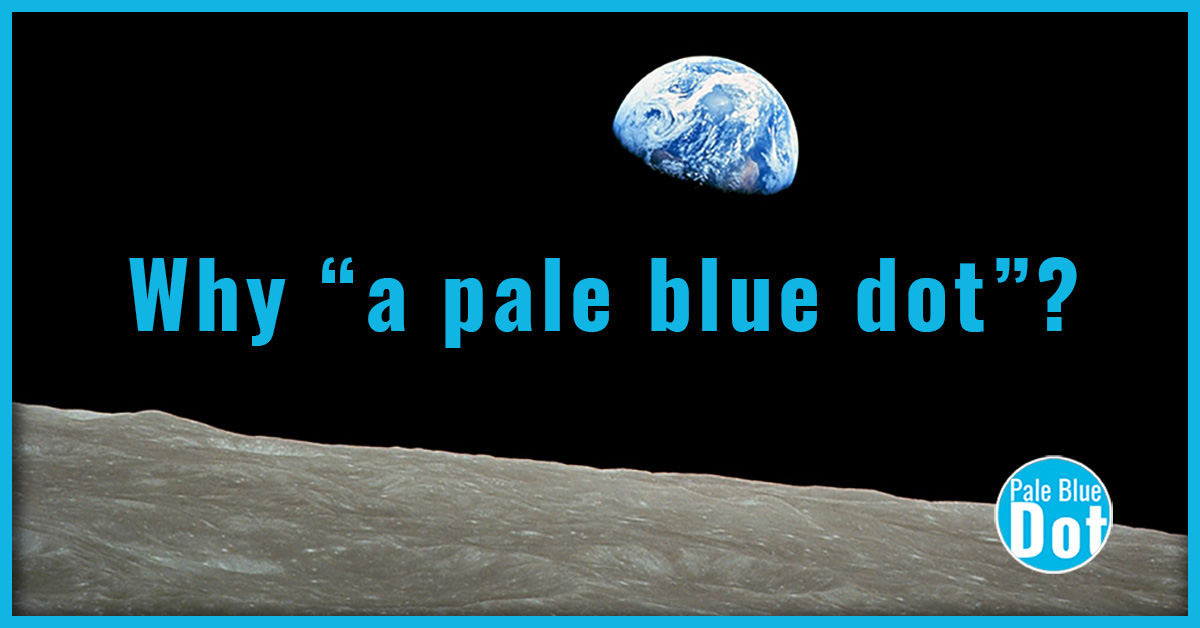The name of our foundation is rooted in two photos that highlight the paradoxical context in which we exist: our planet is simultaneously cosmically insignificant, and the most important thing we share as a species.
Photo 1: Earthrise
1968 was an awful year for humanity. The Tet Offensive and the My Lai massacre happened in Vietnam. Warsaw Pact troops invaded Czechoslovakia to end the “Prague Spring” of political liberalization, sending thousands of refugees to Canada. Martin Luther King was assassinated. Robert F. Kennedy was assassinated. Nixon won the White House. The Summer Olympic Games in Mexico City were boycotted by 32 African nations in protest of South Africa’s participation. The Parti Québécois was born. All around the globe were protests and strife.
We needed something to put our lives back into context, and that moment came on Christmas Eve, 1968. Three astronauts (Frank Borman, Jim Lovell and Bill Ander) were on the Apollo 8 spacecraft on the first manned mission to orbit the moon when Bill snapped a picture.
Take a look at the picture in the header for this post. That’s “Earthrise”. It is a blue and white marble, rising alone over a swath of barren grey moonscape. On that Christmas Eve in 1968, we saw Earth rise over the moon and it changed everything. That photo made us all aware of how beautiful, and how fragile, our existence is. It started more than fifty years of questions about what we can do to coexist on this globe more effectively, without destroying that same globe in the process.
Photo 2: The Pale Blue Dot

More than twenty years after “Earthrise” entered the public consciousness, NASA’s Voyager 1 spacecraft was about to leave our solar system on an interstellar journey. Carl Sagan, a member of the mission’s imaging team, made an impassioned plea for one last photo: turn the camera around, point it back at Earth from the very edge of our solar system, and take a photo. They agreed, and on February 14, 1990, in a Valentine’s day gift to the astronomer, the resulting image to the right was captured.
It is not one of the most beautiful images of space. In fact, amongst the grains is one tiny little speck measuring less than 0.12 pixels in size, which became known as “the pale blue dot”.
Taken about 6 billion kilometers (3.7 billion miles) from where you are right this instant, this is what the Earth looks like from space. Squint, and you will find it. There is a bluish-white dot about half-way down the image, hiding in the pale brown diagonal line. Squint harder. You’ll find it.
That’s us. That’s the Earth.
Are you a bit underwhelmed, after the beauty of the first photo? Don’t be.
In 1990, the astronomer Carl Sagan put into words something that Kirsten Oulton had felt for long time, but had been unable to express. He framed humanity’s challenge clearly and inescapably: the Earth is where we make our stand.
It is as simple as that. We don’t have a “Planet B”, so we must accept the reality that if we humans wish to continue to thrive on this planet, we need to take action to preserve the only home we have ever known.
Pale Blue Dot: A Vision of the Human Future in Space
“Look again at that dot. That’s here. That’s home. That’s us. On it everyone you love, everyone you know, everyone you ever heard of, every human being who ever was, lived out their lives. The aggregate of our joy and suffering, thousands of confident religions, ideologies, and economic doctrines, every hunter and forager, every hero and coward, every creator and destroyer of civilization, every king and peasant, every young couple in love, every mother and father, hopeful child, inventor and explorer, every teacher of morals, every corrupt politician, every “superstar,” every “supreme leader,” every saint and sinner in the history of our species lived there–on a mote of dust suspended in a sunbeam.
The Earth is a very small stage in a vast cosmic arena. Think of the rivers of blood spilled by all those generals and emperors so that, in glory and triumph, they could become the momentary masters of a fraction of a dot. Think of the endless cruelties visited by the inhabitants of one corner of this pixel on the scarcely distinguishable inhabitants of some other corner, how frequent their misunderstandings, how eager they are to kill one another, how fervent their hatreds.
Our posturings, our imagined self-importance, the delusion that we have some privileged position in the Universe, are challenged by this point of pale light. Our planet is a lonely speck in the great enveloping cosmic dark. In our obscurity, in all this vastness, there is no hint that help will come from elsewhere to save us from ourselves.
The Earth is the only world known so far to harbor life. There is nowhere else, at least in the near future, to which our species could migrate. Visit, yes. Settle, not yet. Like it or not, for the moment the Earth is where we make our stand.
It has been said that astronomy is a humbling and character-building experience. There is perhaps no better demonstration of the folly of human conceits than this distant image of our tiny world. To me, it underscores our responsibility to deal more kindly with one another, and to preserve and cherish the pale blue dot, the only home we’ve ever known.”
Want to hear more?
Want to hear more from Carl Sagan’s book? Play the video below and spend some time thinking about it. Whether you have children or not, you still need to come to grips with how you are living your life, and its impacts on the people around you, the air you breathe, the water you drink, and the land on which you stand.
Do you have a plan? Is it already in motion? If not, don’t worry, anyone can start making changes. The best time to start is today.


Leave a Reply